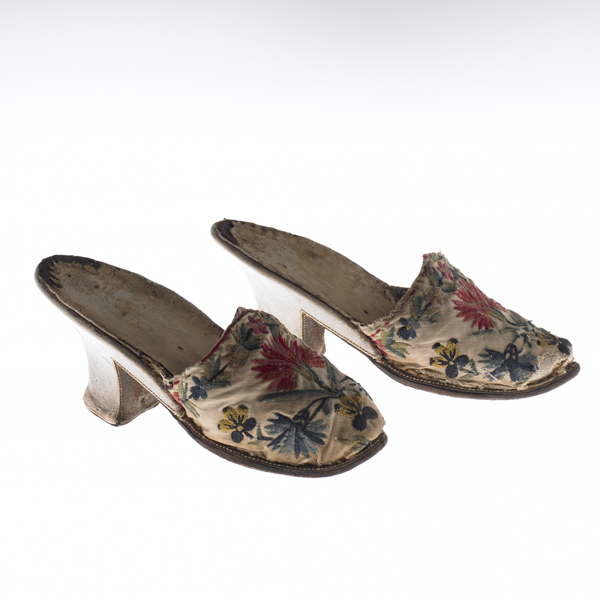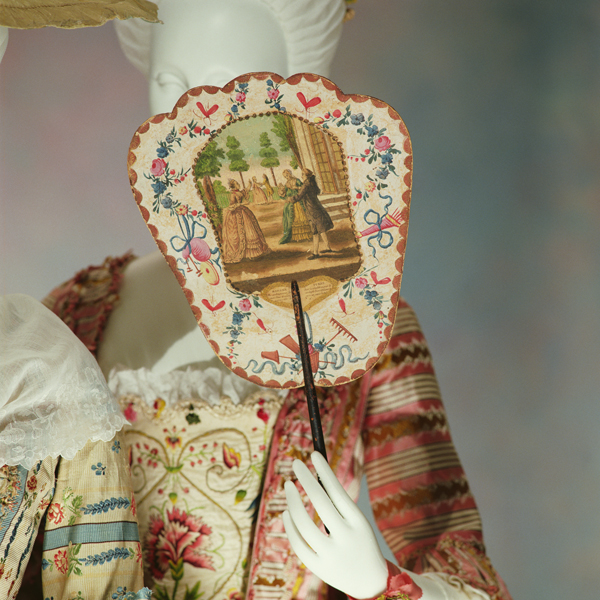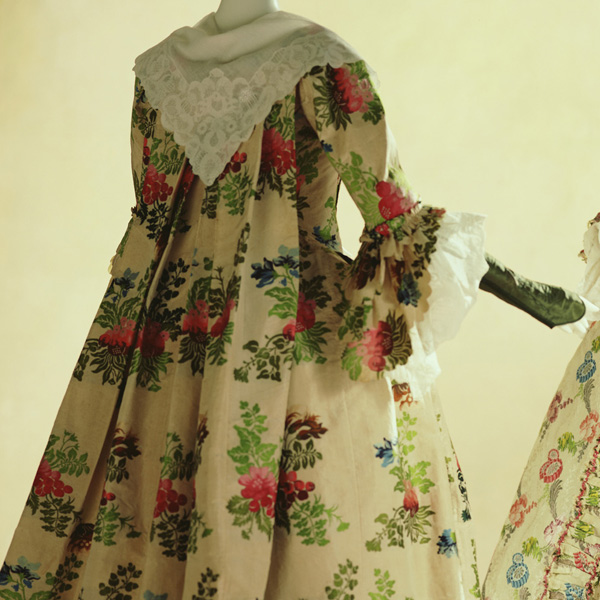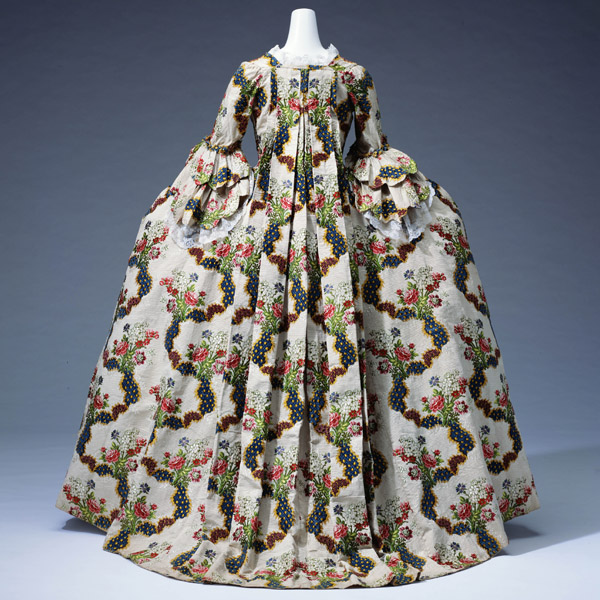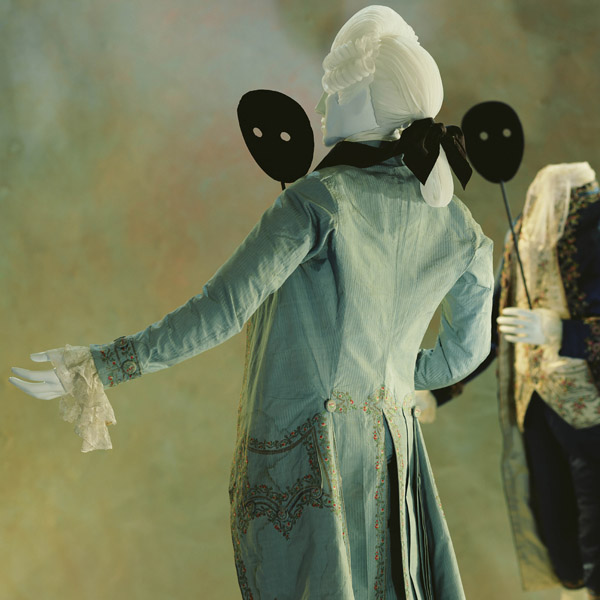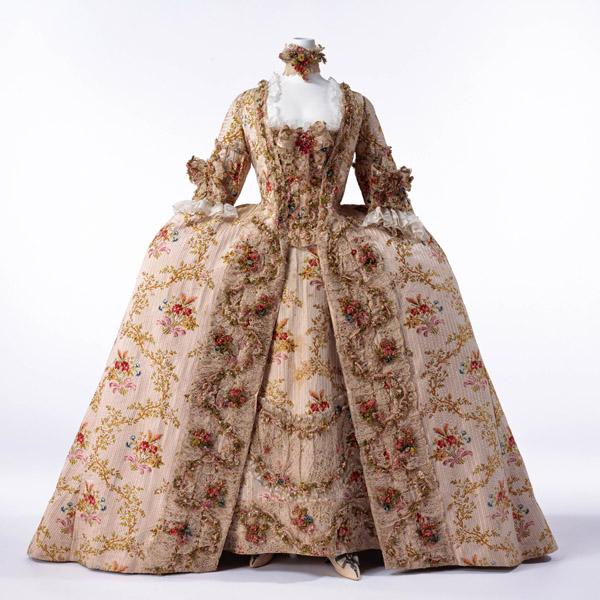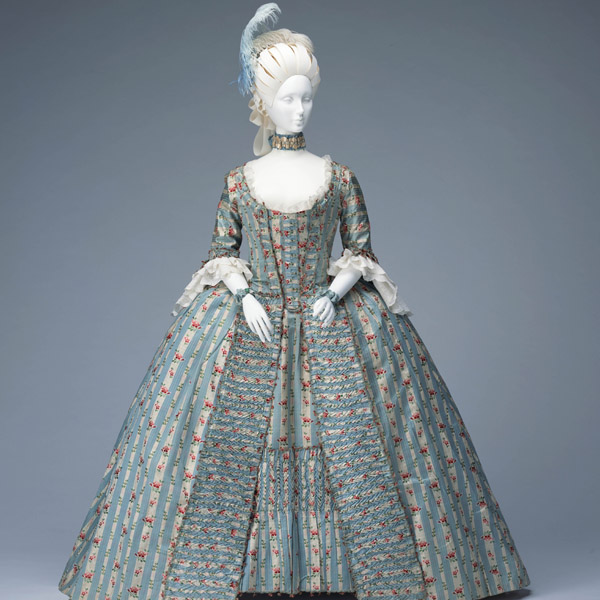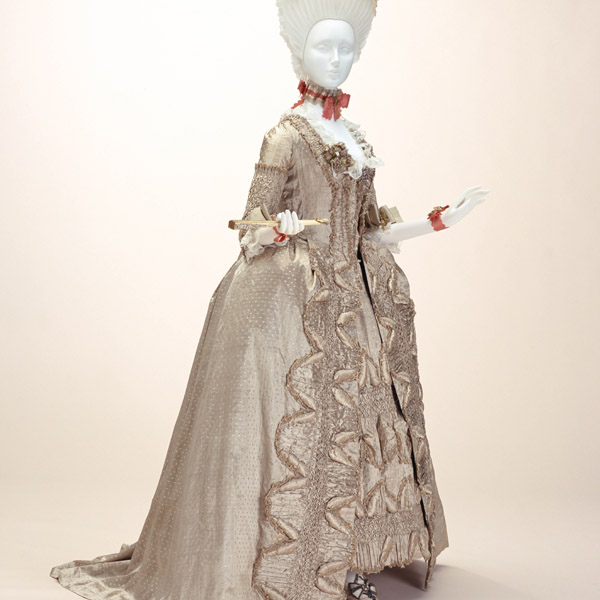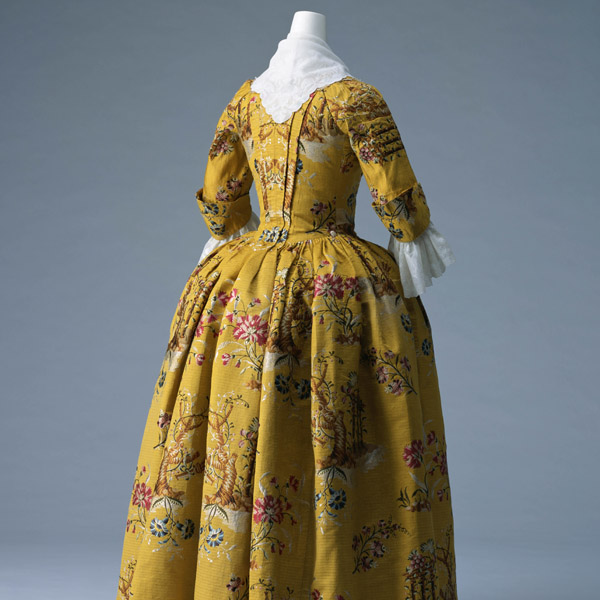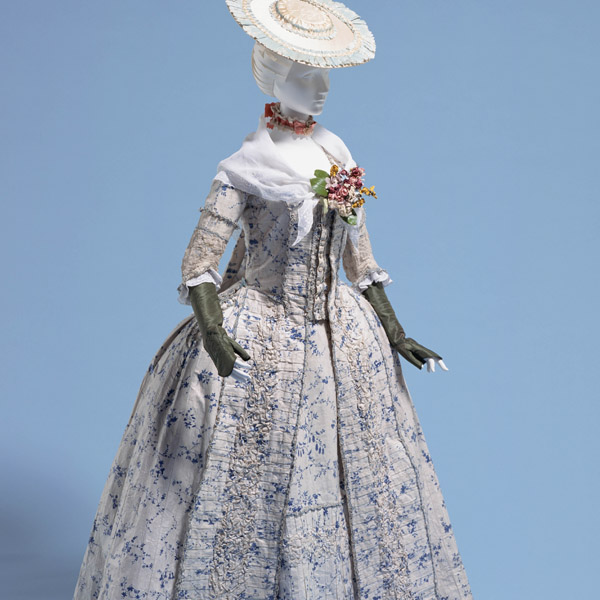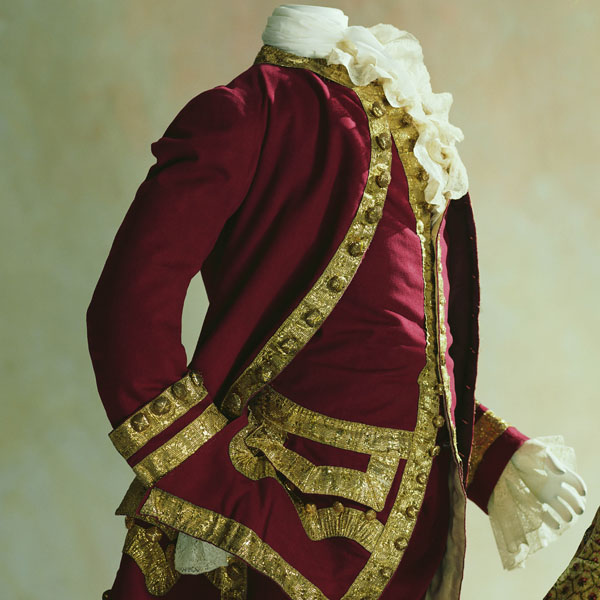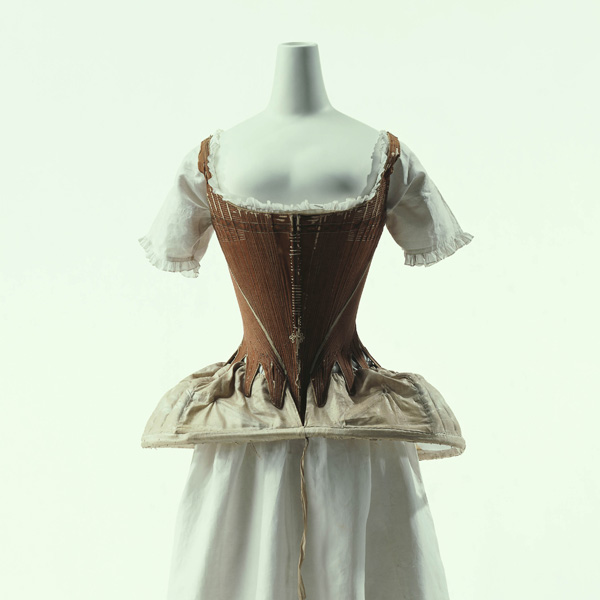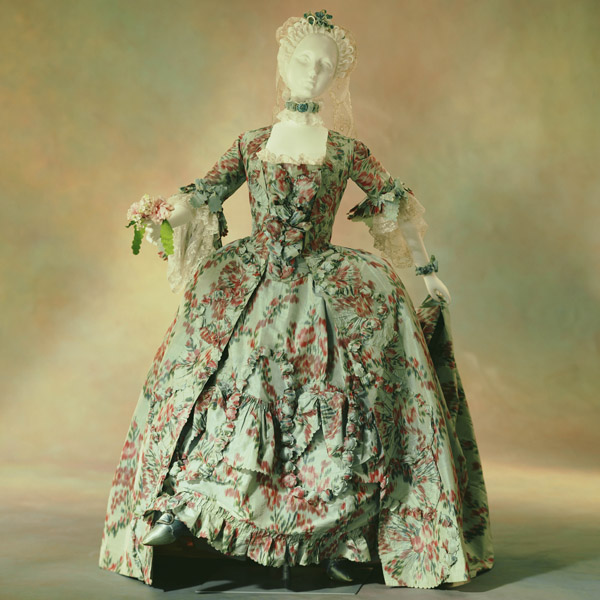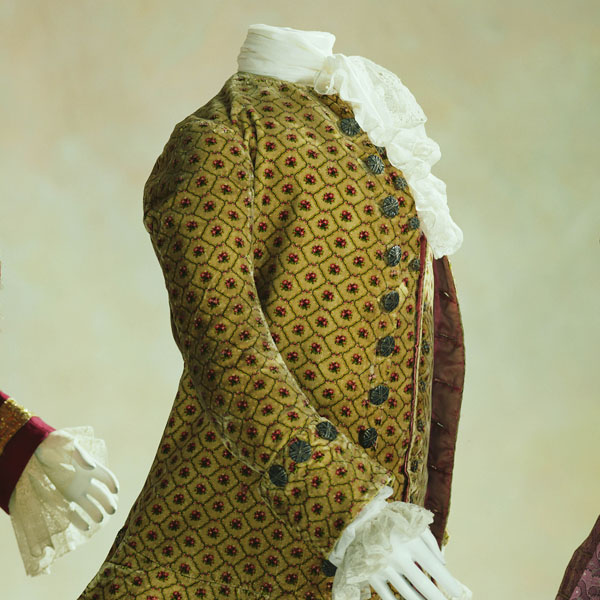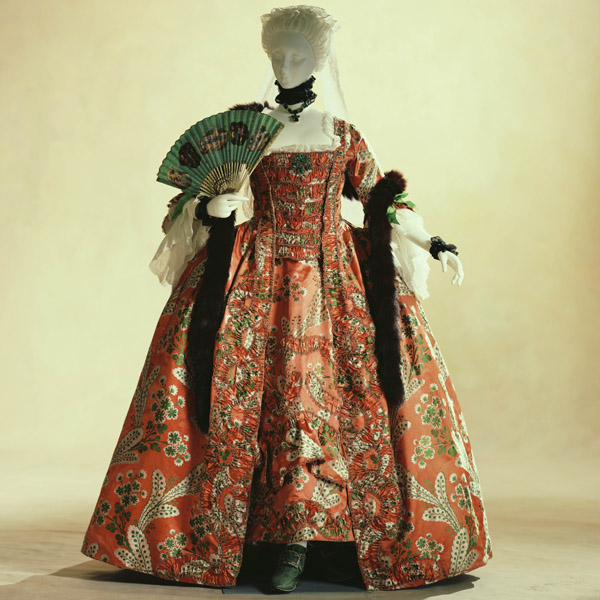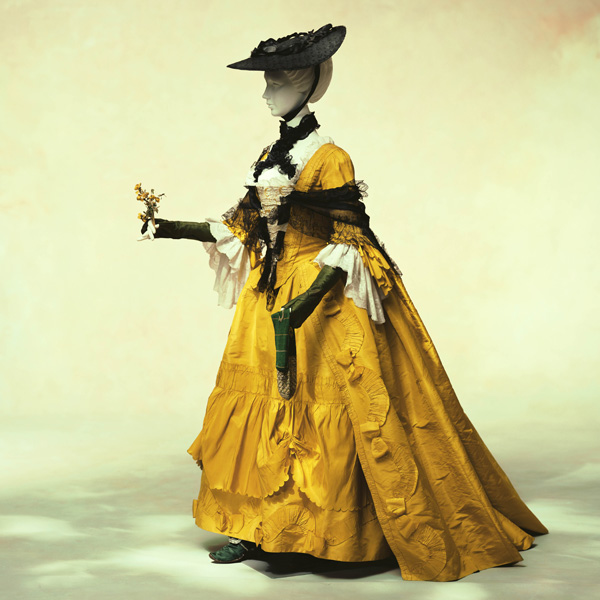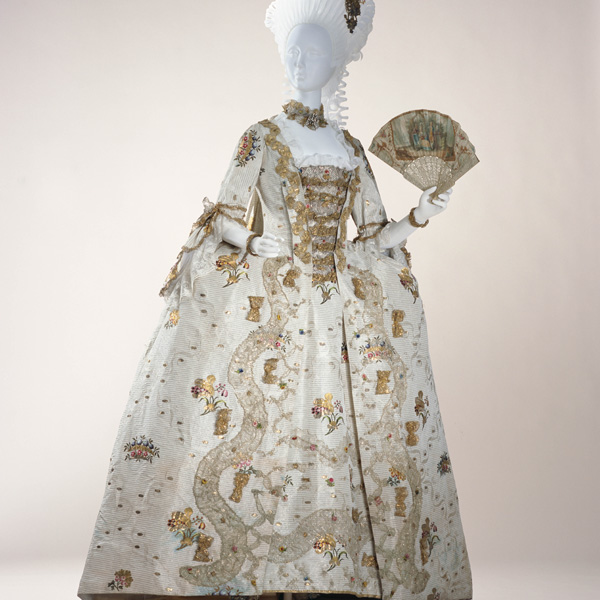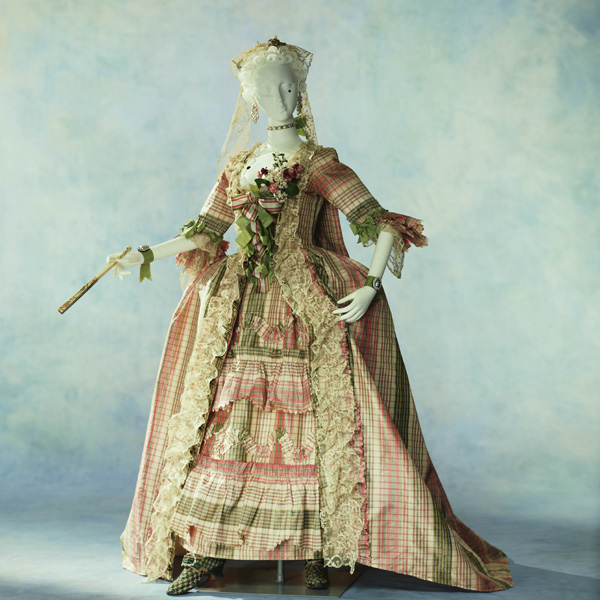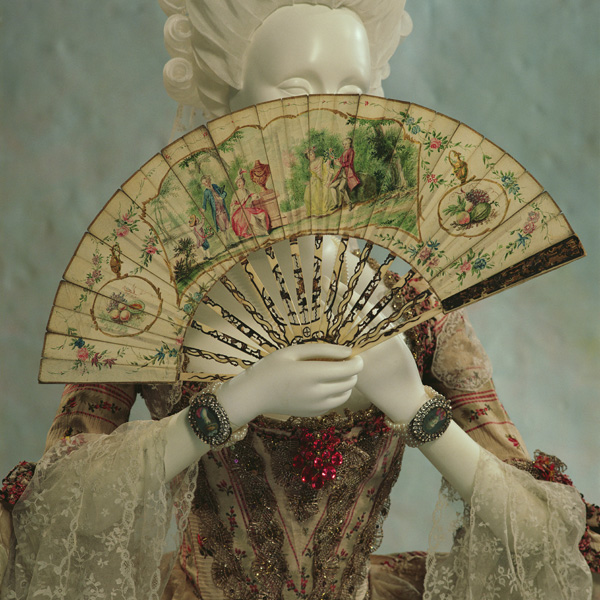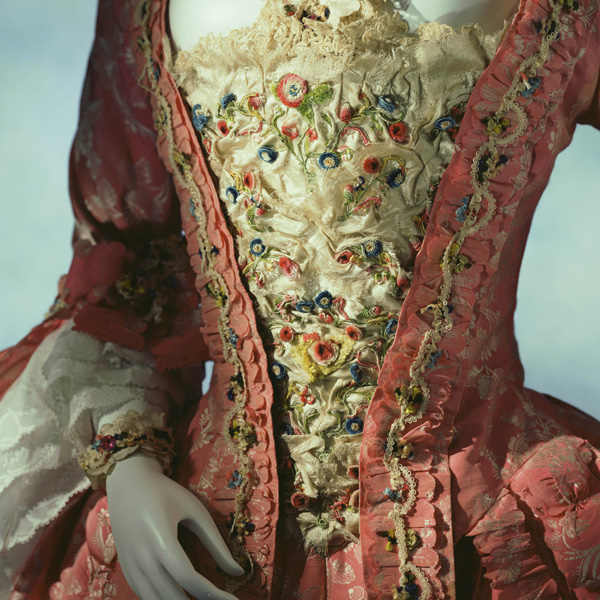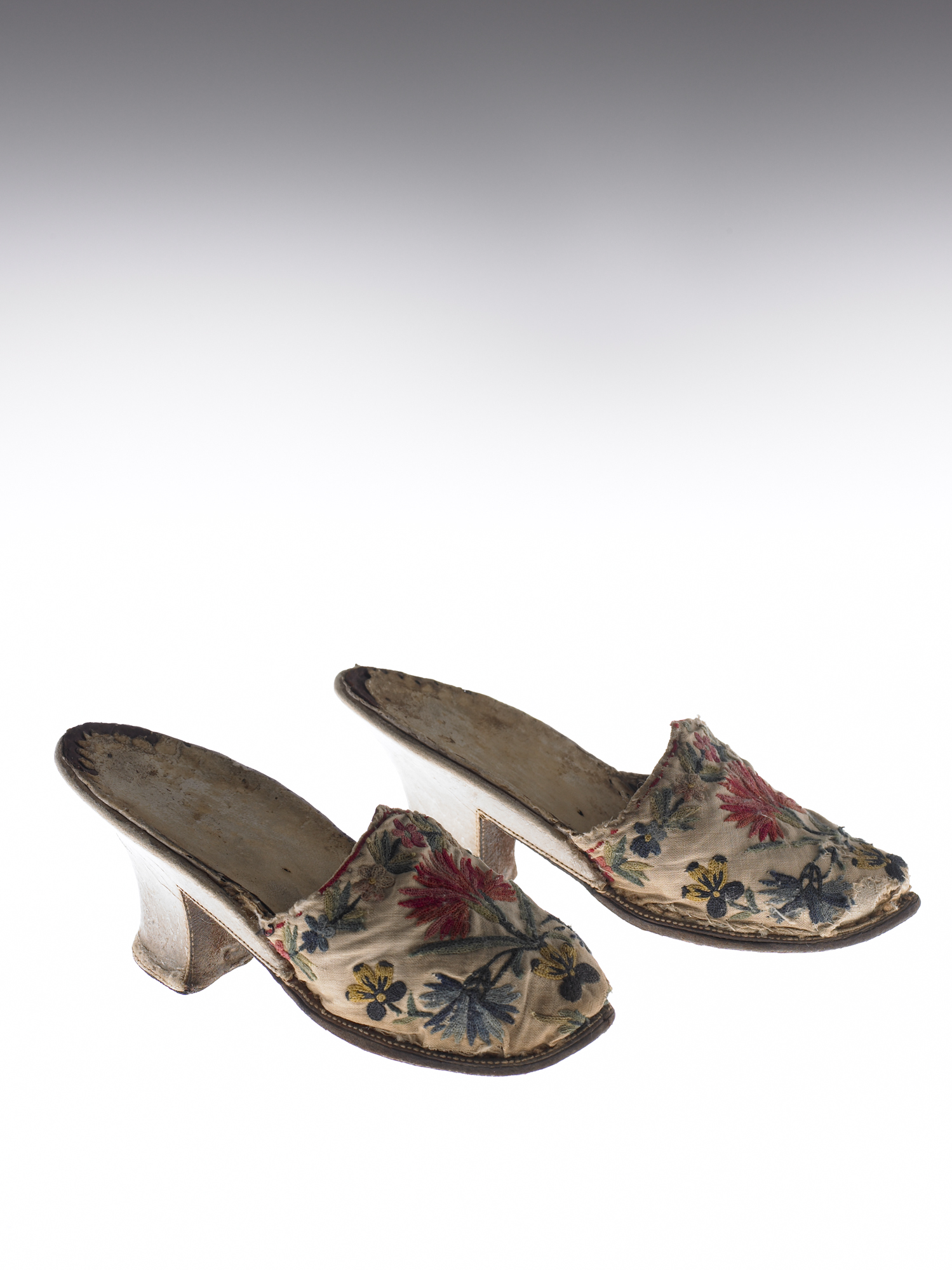
© The Kyoto Costume Institute, photo by Masayuki Hayashi
You can enlarge by putting the mouse cursor on the image.
Mule
Late 18th century - unknown (Country)
- Material
- Beige cotton or linen embroidered in chain stitch with floral patterns such as a carnation and violets; leather sole and insole.
- Dimension
- approximately 20.5 cm (length) / 7.0 cm (width) / 7.5 cm (height)
- Inventory Number(s)
- AC1093 78-32-4AB
During the 18th century, women from the aristocratic classes primarily wore luxurious woven silk shoes in public, often adorned with buckles covered in imitation jewels. In contrast, these shoes, made of cotton or linen, lacking fastenings, and with the heel exposed, represent the simple style known as “mules.” Mules were originally worn in the boudoir, but by the 18th century had become the favored style for both indoor and outdoor wear amongst both men and women of the aristocratic classes. The mule has been frequently depicted in prints and paintings, such as “The Swing” by Jean Honoré Fragonard (circa 1767, The Wallace Collection, England), and was increasingly worn in various settings and situations by the late 18th century. In 1772, The London Magazine or Gentleman's Monthly Intelligencer stated that “slippers without quarters are the general wear; notwithstanding which, it is amazing how well they [French women] dance, and how firm they walk.”
These shoes are embroidered with a single red carnation in the center, yellow and navy violets on both sides and the toe, and grass and flowers around the shoe’s opening. The carnation is said to be native to the Mediterranean coast and West Asia and has been popular in Europe since the early modern period. This floral motif featured extensively in 18th-century watches, furnishings like chests, and accessories such as stomachers and brooches.
 Digital Archives
Digital Archives